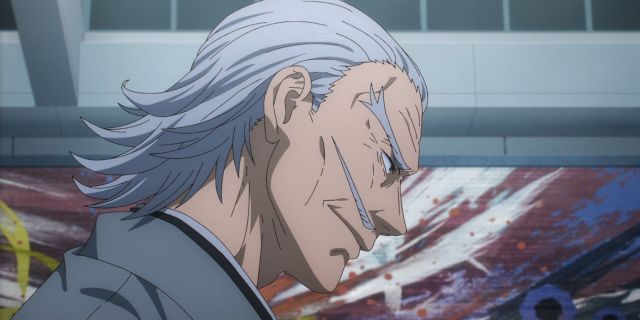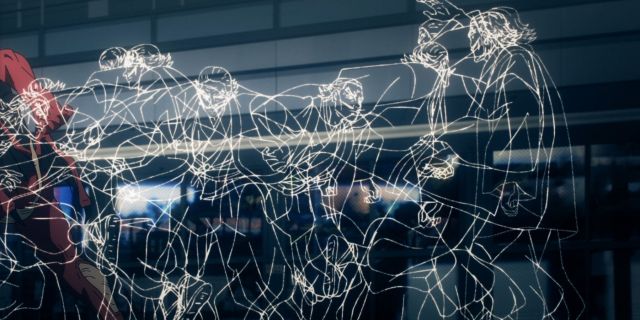Highlights
- Episode 38 of Jujutsu Kaisen impresses with Mei Mei’s fight scene and introduces Naobito Zenin, a hilarious otaku who surprises viewers with his skills and knowledge.
- Naobito’s jujutsu technique allows him to split a second into 24 frames, enabling him to move at an unnatural speed and trap others in two-dimensional still frames.
- The technique’s cleverness lies in the risks involved, as any actions that would look unnatural or choppy when animated would render it ineffective. The ability breaks the fourth wall, turning the animation process into a weapon and providing a unique and entertaining twist.
Jujutsu Kaisen‘s Episode 38 might have sparked some disagreement among viewers, particularly in relation to the latter part’s visual presentation. Nevertheless, it’s challenging to outright dislike the entire episode. The introduction of Mei Mei’s fight scene was impressive, and it brought forth one of the most captivating jujutsu techniques to date, infused with humor through its meta-commentary.
Naobito Zenin, the head of the Zenin Family and uncle to Maki and Mai, had been portrayed as a lazy drunkard until the mentioned episode. However, when confronted with the special grade curse Dagon alongside Maki and Nanami, demonstrates why he holds the family leadership position. In a humorous turn of events, he also revealed his otaku side while stepping up to the challenge.
RELATED: Jujutsu Kaisen: Prison Realm, Explained
An Unprovoked Tangent

10 minutes into the episode, Dagon has flooded the entire room while ascending toward the ceiling. Naobito is unmoved by the torrent and immediately begins ranting to his opponent about the frame rate of animation, completely ignoring his opponent’s objection to being called a “cursed spirit.” He talks about the modern trend of increasing resolution and frame rate, before criticizing how modern TVs put frame interpolation on by default.
All of this is just a ploy to agitate and distract Dagon from a sneak attack by Nanami, but the content of the rant itself comes so out of left field that it feels like a direct call-out. For years, filmmakers have been talking about how frame interpolation on home theater set-ups can misrepresent films and television. Specifically within the anime fandom, upscaling anime clips to 4K in 60 FPS has been an inescapable trend for some time.
We at Game Rant even wrote about frame interpolation and anime last year, discussing its appeal, its conflict with authorial intent, and the way it ultimately hurts a given work. The short version is that because of the way animation as a medium works, and the importance of any given number of frames in a scene, interpolation can betray the intended flow of a given gut. This can happen in minor and major ways.
When watching this episode of Jujutsu Kaisen, it’s hard not to laugh at this unprovoked tangent that feels even more fitting within the TV anime adaptation. Naobito might be an arrogant, toxically traditional drunkard, but it would be a lie to say that in this instant – and only this instant – he was spitting facts. And all of that would just be a fun distraction were it not for his jujutsu technique that quite literally embodies the medium itself.
Projection Sorcery, Explained

Naobito’s jujutsu technique allows him to divide a single second into 24 frames, mirroring the traditional framerate used in film, television, and animation. Each “frame” corresponds to a movement in a predetermined sequence, following a path within the caster’s line of sight. Upon initiating this sequence, Naobito gains the ability to navigate at an apparently unnatural speed. However, the true ingenuity lies not just in movement; the technique can also be used offensively.
Due to the specific rules governing the technique, there’s a potential for mistakes. Naobito can impose these rules on anything or anyone he touches, effectively ensnaring others. If the target fails to “define their actions within 1/24th of a second,” they become frozen in a flat, two-dimensional still frame. Liberation occurs when they are struck in that state, though they often reel from the impact.
The inherent risks contribute to the technique’s cleverness and excitement. Depending on factors the caster might overlook before initiating movement, the technique can backfire. Any actions within a sequence that defy physics or trajectory result in consequences for both the caster and the target. Essentially, if the animated execution would appear awkward, unnatural, or choppy, the technique fails.
Beyond the inherent risks, the appeal of this ability lies in its fourth-wall-breaking nature, turning the animation process into a formidable weapon. While Jujutsu Kaisen introduces various powers, Naobito’s ability stands out, earning a nod of appreciation. The utilization of behind-the-scenes sketches and run cycles to illustrate the ability, coupled with mock director’s notes emphasizing the associated risks, adds a tongue-in-cheek element.
Crafting truly distinctive powers in a prominent shōnen anime proves challenging, as part of the genre’s allure is anticipating novel abilities. Not only must the power be original, but it must also be convincingly effective and cool. Jujutsu Kaisen accomplishes this feat, presenting a high-risk yet potent combat technique, and topping it off with a meta-commentary on frame interpolation that resonates with every cinephile’s soul.
Jujutsu Kaisen is avilable to stream on Prime Video.















Leave a Reply